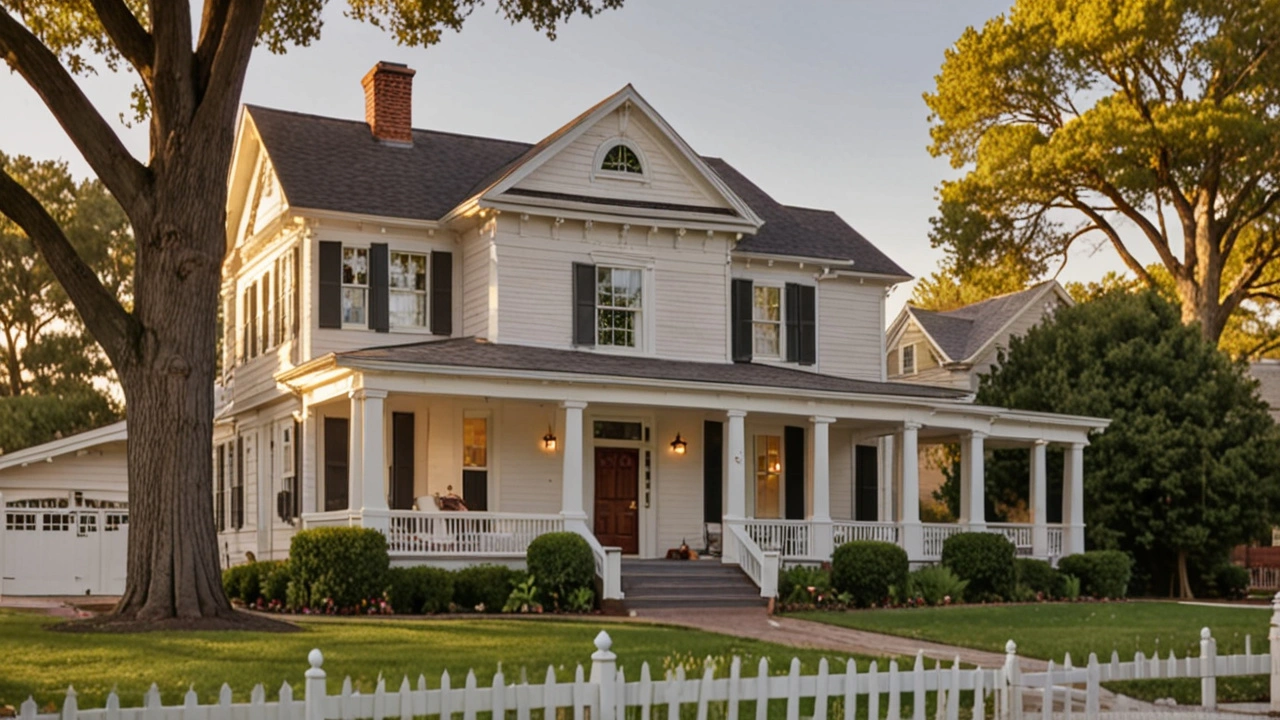American homes: how to spot styles and make smart choices
Most American homes you see on a street weren’t invented yesterday. They’re a mix of older styles—Colonial, Craftsman, Dutch Colonial—and modern tweaks. Knowing the basics helps when you’re buying, restoring, or just curious about a neighborhood.
Common styles and the features to look for
Colonial: Symmetry rules. Look for a centered front door, evenly spaced windows, and simple shutters. Inside, expect straight hallways and formal rooms. These homes often have gabled roofs and double-hung windows.
American Craftsman: Low-pitched roofs, exposed rafters, wide eaves, and a big front porch with tapered columns. Craftsman homes use natural wood and built-in cabinetry—details that add real character and resale value.
Dutch Colonial Revival: The telltale gambrel roof (a barn-like double slope) is the easiest clue. These houses often have dormer windows and cozy, functional layouts.
Greek Revival and Georgian influences: Big columns, pediments, and formal proportions. These make homes feel grand but can mean stricter rules if the house sits in a historic district.
Practical tips for buyers and people renovating
Inspect the roof and foundation first. Style matters less if water’s coming in or the foundation’s shifting. Ask for recent inspection reports and prioritize fixes that stop damage—roof, gutters, grading—before cosmetic work.
Check systems: HVAC, electrical, and plumbing often cost the most to replace. Older homes can have charm but outdated wiring or knob-and-tube requires immediate attention. If a seller recently upgraded systems, get the receipts and permits.
If the house is historic, learn local rules. Historic districts or landmark listings often limit what you can change outside—and sometimes inside. That can protect value but add red tape for renovations.
Preserve signature details. Built-ins, original trim, staircases, and hardwood floors are value drivers. When renovating kitchens or bathrooms, try to keep original moldings and restore rather than replace where possible.
Boost energy efficiency without killing style. Add insulation in the attic, upgrade to a high-efficiency HVAC, and install storm windows or weatherstripping. You’ll cut bills and keep the look of an older home intact.
Small curb improvements matter. A fresh coat of historically appropriate paint, repaired steps, and simple landscaping make the house feel cared for—and that helps resale.
Want to learn more about a style you spotted? Take photos of key details—roof shape, porch columns, window types—and compare them to guides or ask a local architect. You’ll spot patterns faster than you think.
American homes are practical and adaptable. Know what to protect, what to upgrade, and how to match repairs to the house’s character, and you’ll get more comfort and value out of whatever style you choose.

Greek Revival Architecture: Timeless Style and Lasting Influence
Greek Revival architecture has stood the test of time, showing up everywhere from grand public buildings to charming homes across America and beyond. This article explores why this style caught on, what makes it stand out, and how it still influences design today. Expect relatable tips for spotting Greek Revival features, a peek into its history, and practical advice for anyone drawn to its classic look. Whether you're a history buff, home renovator, or just love beautiful buildings, you'll walk away understanding why Greek Revival's appeal never seems to fade.
Read more
Colonial Revival Architecture: A Timeless American Tradition
This article dives into the rich history and enduring appeal of Colonial Revival architecture. It explores its origins, key characteristics, and why it continues to be a popular choice for American homes. The piece also offers tips on recognizing and embracing this traditional style in modern living.
Read more